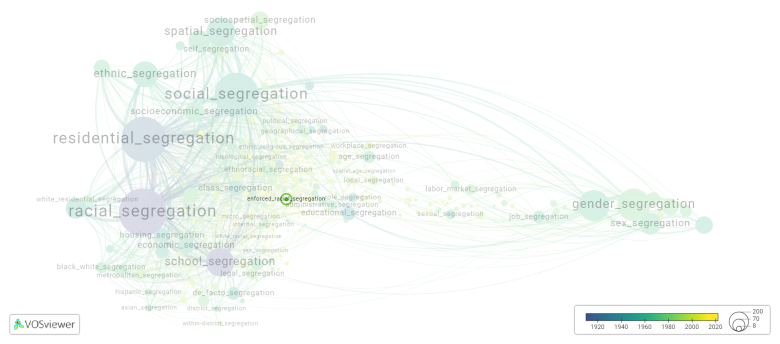Enforced racial segregation
Date and country of first publication[1]
1996
United States
Definition
Enforced racial segregation refers to a system in which laws or regulations are put in place to separate individuals or groups of different races, often resulting in separate living areas, schools, public facilities, and other social spaces.
Historically, enforced racial segregation has been primarily associated with the United States during the era of Jim Crow laws, which were state and local statutes that enforced racial segregation and discrimination against African Americans from the late 19th century up to the mid-20th century. Under this system, African Americans were legally compelled to use separate facilities from those used by Whites, resulting in racially segregated schools, parks, restaurants, public transportation, and other public spaces.
Enforced racial segregation was justified by proponents as a means to maintain white supremacy, justify racial discrimination, and preserve social order. It was based on the racist ideology that different races should be kept separate to prevent miscegenation and maintain the perceived superiority of the white race.
Racial segregation had numerous negative consequences, including contributing to the systemic marginalization and disenfranchisement of African Americans. This separation led to unequal access to resources, limited educational opportunities, restricted employment options, and degradation of social and economic conditions within African American communities.
However, enforced racial segregation faced significant opposition from civil rights activists and organizations, culminating in the Civil Rights Movement of the 1950s and 1960s. Led by figures like Martin Luther King Jr., activists fought for the end of racial segregation, advocating for equal rights and opportunities for all races. The movement eventually led to significant legal and societal changes, including the landmark Supreme Court ruling in Brown v. Board of Education (1954), which deemed racial segregation in public schools unconstitutional.
Today, enforced racial segregation has been legally abolished in most countries, including the United States. However, the legacy and effects of past racial segregation are still visible in many societies, leading to ongoing efforts to address racial inequality and promote racial integration and equality.
See also
Related segregation forms
Enforced racial segregation is frequently discussed in the literature with the following segregation forms:
This visualization is based on the study The Multidisciplinary Landscape of Segregation Research.
For the complete network of interrelated segregation forms, please refer to:
References
Notes
- ↑ Date and country of first publication as informed by the Scopus database (December 2023).
At its current state, this definition has been generated by a Large Language Model (LLM) so far without review by an independent researcher or a member of the curating team of segregation experts that keep the Segregation Wiki online. While we strive for accuracy, we cannot guarantee its reliability, completeness and timeliness. Please use this content with caution and verify information as needed. Also, feel free to improve on the definition as you see fit, including the use of references and other informational resources. We value your input in enhancing the quality and accuracy of the definitions of segregation forms collectively offered in the Segregation Wiki ©.
Enforced racial segregation appears in the following literature
Kahn J. (1996). Enslaving the image: The Origins of the Tort of Appropriation of Identity Reconsidered. Legal Theory, 2(4), 301-324. https://doi.org/10.1017/S1352325200000550
Home R. (2012). Colonial township laws and urban Governance in Kenya. Journal of African Law, 56(2), 175-193. Cambridge University Press.https://doi.org/10.1017/S0021855312000083
Cook N. (2013). South Africa: Politics, economy, and U.S. relations. Countries of the World: Developments, Issues, and U.S. Relations, 4(), 151-199. Nova Science Publishers, Inc..https://doi.org/
Moore R. (2017). The new Jim Crow: Mass incarceration in the age of colorblindness. The New Jim Crow: Mass Incarceration in the Age of Colorblindness, 1-90. Taylor and Francis.https://doi.org/10.4324/9781912282586
Woods L.L., II (2018). “The Inevitable Products of Racial Segregation”: Multigenerational Consequences of Exclusionary Housing Policies on African Americans, 1910 1960. American Journal of Economics and Sociology, 77(3-4), 967-1012. Blackwell Publishing Ltd.https://doi.org/10.1111/ajes.12229

